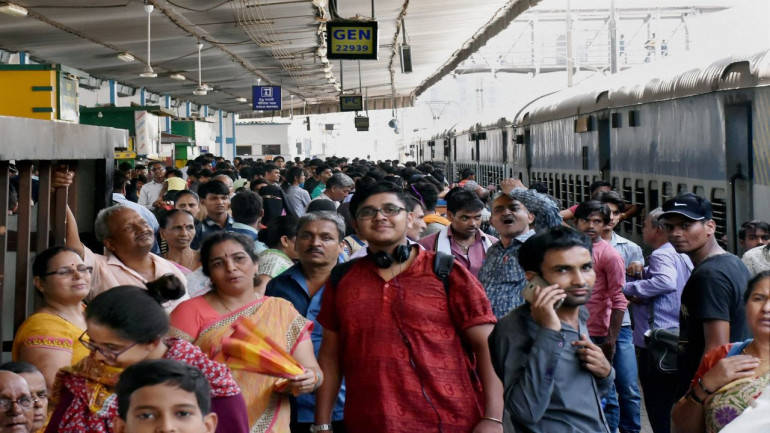As the Elphinstone Road station accident today demonstrated, Mumbai still has miles to go before it resolves its infrastructure woes.

Why is it that in India people have to die to wake up the government? Irrespective of governance claims, it has always been a serious fatal accident that has resulted in this government coming into action. The same could be said for every state government in the country.
Some do lip service till the next accident exposes them again. Others do a sloppy job of it and use the accident as another money-making opportunity. Like war, accidents, too, have become a business opportunity for some.
Unfortunately, Mumbai, the so-called financial capital of the country, has had more than its share of accidents. Every monsoon the state government and the city’s municipal corporation Brihanmumbai Municipal Corporation (BMC) are at odds with each other over water-logging and the lunar surface which a Mumbaikar is told is a road. It’s an open joke among Mumbaikars that every year BMC, the richest municipal corporation in the country, issues tenders to maintain the potholes rather than the roads.
For Mumbai trains are supposed to be its lifeline but in reality they have taken more lives than any other form of accidents, natural catastrophe or terrorist attacks put together. Between January and August 2017 alone railways have seen over 2,000 deaths. This number tells us how heavily overburdened the Mumbai rail network is.
Over the past few years, as offices shifted from Churchgate, Nariman Point to Bandra Kurla Complex and Lower Parel–Elphinstone Road area so did the rail traffic. However, the Lower Parel and Elphinstone Road railway stations, which were rarely crowded earlier, became a nightmare as office complexes sprouted on old textile mill compounds.
Anyone who has ever travelled during the morning rush hour to Lower Parel and Elphinstone Road knows that it is an ordeal to exit the station. There are police constables at the exit to control the crowd but they are mere spectators.
Every person who has walked the foot over bridge (FOB) at these stations knew it was only a matter of time when a stampede can cause havoc. With barely enough breathing space between two people walking on the FOB a small panic was all that was needed to cause a major accident.
And one did happen today. Needless loss of over 22 lives plus more than 30 injuries brought the plight of commuters to the political masters. For politicians across party lines the tragedy was an occasion for one more photo-op.
For the general public, however, what was on display at Elphinstone Road was a complete lack of planning from everyone responsible in railways, BMC, state and central government.
It has been years since traffic started building up at Elphinstone Road and Lower Parel station, yet the railways did little to increase the number of entry or exit points, except post a policeman. Reports say that state Members of Parliament had apprised the former railway minister Suresh Prabhu of the need for a better bridge. Prabhu, however, cited lack of funds to attend to the request immediately — this was in February 2016.
But railways alone is not to be blamed. Civic authorities, while giving permission for high-rises did not bother to provide infrastructure facility. Apparently, it was the same area which was badly inundated during the August 30, 2017, rains.
The biggest burden of all the ills of the city has to fall on the central and state government. Maharashtra accounts for 40 percent of the country’s direct taxes; within it Mumbai accounts for the lion’s share. Yet the city has been ignored in every year.
Each year a Mumbaikar listens to the budget in the hope that the government will help improve his lifestyle by announcing more number of trains or a better infrastructure service. Every year he has been disappointed, but still gets up every morning for what is nothing less than an adventure trip to reach his office. This compulsion or restraint has been termed by many as the ‘spirit of Mumbai’.
Every restraint has a breaking point. Mumbai is fast reaching that point if one goes by the chatter on Twitter, which has erupted by calling politicians of all parties to be made answerable. Some have pointed out, and rightly so, that politicians and senior railway managers be made to travel in the local train to feel a common person’s ordeal. Others have used choicest of expletives which only highlights the pressure building up.
The city does not need words to placate the tempers. It needs to see development. There is only a small line that separates the spirit of Mumbai to change to animal spirit.
It once again raises the question why do these accidents happen in India on a regular basis and one does not hear about it in the developed world. No, the argument is not about population, it is about the value of life. As long as ministers know that they can get away by announcing a Rs 5 lakh ex-gratia payment such accidents will keep on happening. Unless the civil authorities, the bureaucrats are held responsible and made to pay till it hurts them such accidents will keep on happening.
Leave a Reply